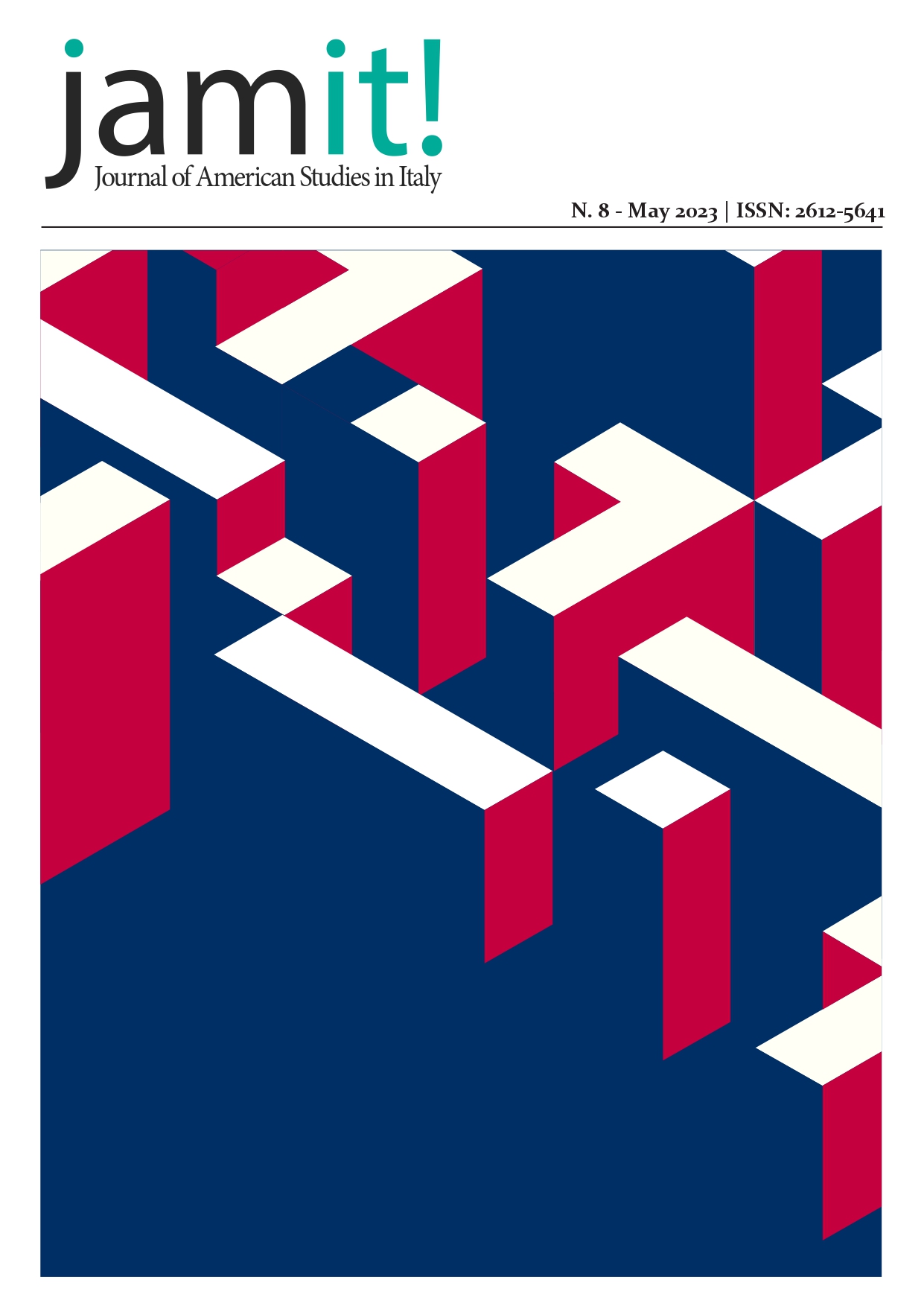Archives
-
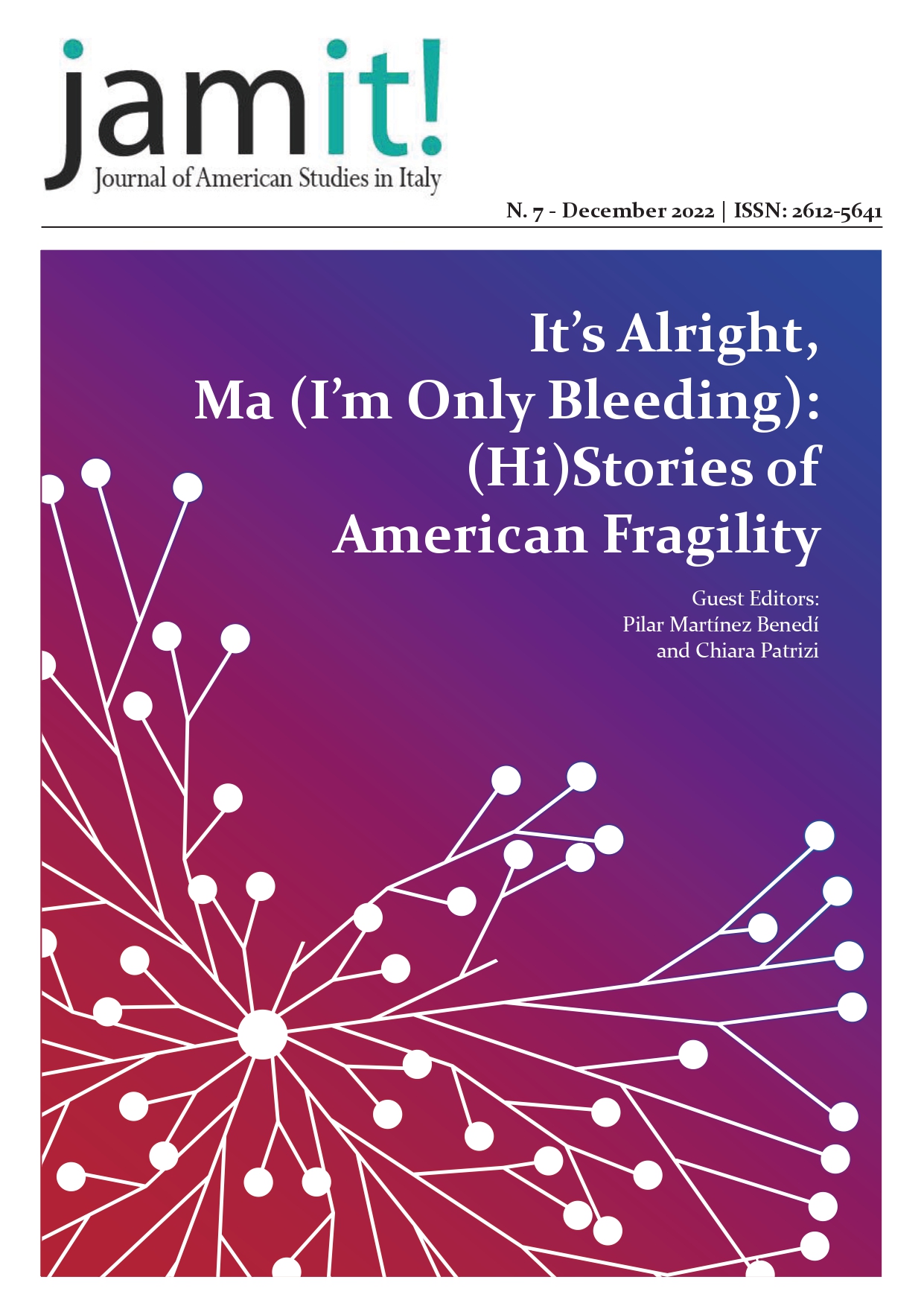 It's Alright Ma (I'm Only Bleeding): (Hi)Stories of American Fragility
No. 7 (2022)
It's Alright Ma (I'm Only Bleeding): (Hi)Stories of American Fragility
No. 7 (2022)In 2020, as many Western governments adopted restrictive measures to contain the Covid-19 pandemic, a number of philosophers, sociologists, political and cultural theorists started thinking about such an unprecedented state of affairs in terms of state of exception and biopolitics. If Giorgio Agamben famously inveighed against “the invention of an epidemic” by state power so as to normalize the state of exception as a legitimate “governing paradigm,” others, like Slavoj Žižek, focused on the “reality of the threat.” “Even if life does eventually return to some semblance of normality, it will not be the same normal as the one we experienced before the outbreak,” Žižek claims, as such, “we will have to learn to live a much more fragile life with constant threats.”
In this context, the idea of fragility, traditionally confined to the private sphere, has forcefully entered the public debate. More than ever, neoliberal capitalism is failing to cope with the challenges of the present. Not surprisingly, such inadequacy has been nowhere as glaring as in the US, where the pandemic has exacerbated class, gender, and racial differences. Indeed, far from being oblivious to such differences, Covid-19 hit harder those—such as the lower and working classes, minorities, disabled, women, LGBTQ+ people—who were already living a “fragile life with constant threats”: either because they were more exposed to the disease or because they suffered more from the economic, social, and personal consequences of the pandemic, or both.
Social and personal fragilities have taken on a different meaning in the aftermath of the pandemic. Words and concepts such as loss, grief, alienation, debility, distance, have become part of a broader discourse which includes the personal and the communal as two elements that cannot be separated to understand US and Western society in the present. The interplay between these two elements, and/or between bodily debility and socio-economic fragility, is especially visible in the two global events that marked the year 2020: the Covid-19 pandemic and the rekindling of the BLM movement (worldwide) after the murder of George Floyd. Both, uncannily, under the same cry: I can’t breathe—a cry that calls for bio- and/or necro-political interpretations, but not only.
Covid-19 was a totalizing event—but what about other, non-Covid-related personal sufferings, which often had to be endured in even greater solitude, due to the impossibility of social interaction and physical contact? The intersection of individual and global tragedies is increasingly generating narratives of loss that are at once personal and communal, as in the case of Jesmyn Ward and Claudia Rankine. Similarly, recent BLM activism embraces vulnerability as an instrument of witnessing and protest. Fueled by the recent global traumatic events, over the last year and a half vulnerability and debility have become categories that seem to encompass all aspects of life; the defining features of a society marked by loss—of resources, health, physical contact, time, air to breathe. And since the personal can be political in powerful ways, debility has come to represent a political stance. At the same time, vulnerability, fragility, debility are not solely negative conditions that move us to pity, but may conversely turn into strength, resilience and, to use Ward’s term, “respair”—that return to hope after a period of despair. Either as a sign of suffering and grief, or as a valiant fight against adversity, private fragilities might have a lot to say about the world we live in. As Walt Whitman put it after having witnessed the horrors of the Civil War first-hand, “in the glints of emotion under emergencies . . . we get far profounder clues to the . . . world than all its more formal history” (Specimen Days).
The seventh issue of Jam It! seeks to recuperate that emotional (under)current below the notorious “emergencies” of formal history. We are interested in minor, domestic, intimate scenes and experiences that more often than not remain muted, dampened, by official narratives of public events. We invite contributions from across the disciplines that not only discuss how literature, cultural artifacts, social and political manifestations are registering the ways in which the current situation should foster a meditation on the category of vulnerability/fragility, but also that analyze what does it imply for US society—and Western society at large—that personal grief took place in the midst of communal grief.
-
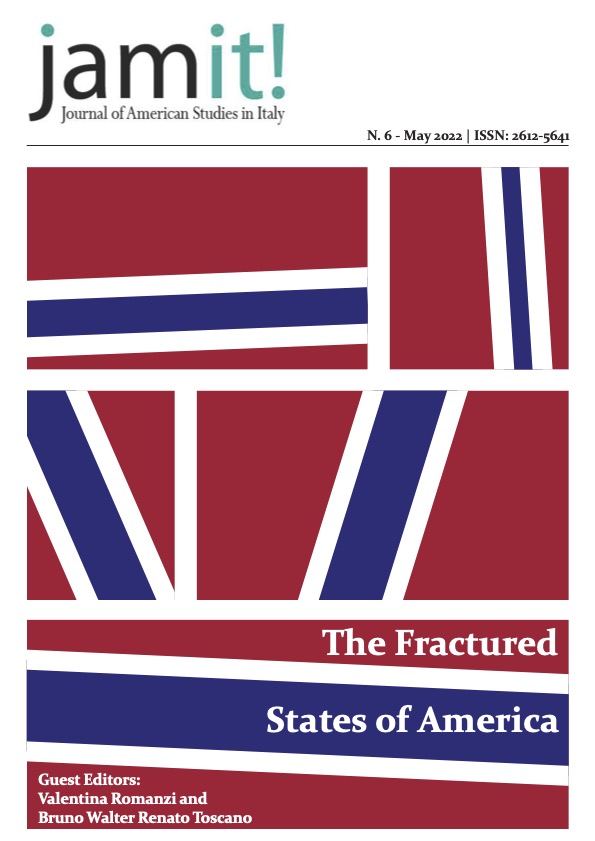 The Fractured States of America
No. 6 (2022)
The Fractured States of America
No. 6 (2022)The quest to define the true essence of US identity dates back to colonial times, long before the nation itself was formally established. Yet, scholars traditionally situate the first explicit investigation into what constitutes an American citizen in J. Hector St. John de Crèvecœur’s Letters from an American Farmer (1782). The third of the titular letters, aptly named “What is an American,” offers a list of features that de Crèvecœur considered quintessential to Americanness: industry, freedom, individualism, equality, assimilation. All these elements converged in what later became known as American exceptionalism, a doctrine that undergirded (and, to an extent, still undergirds) most, if not all, of US foreign policy.
De Crevecoeur’s essay also introduced the concept of the ‘melting pot’ to describe the yearned-for-homogeneity of a nation aspiring to merge the different cultures informing it, rather than to preserve their differences. Ever since, the United States has strived to present a solid front against the rest of the world, returning time and time again to the defining features of its citizens, and to what sets them apart from their European counterparts. Yet, over the past few decades, it has become evident that internal divisions and differences are increasing, rather than decreasing. While the national narrative of the United States insists on advocating the exceptionality of its people, it is also continuously confronted by the hard truth of their lived experiences (Sieber 2005; Hodgson 2009; Grandin 2019; Spragg 2019).
A kind of internal splintering is especially noticeable in the polarization of contemporary public discourse and in the way it has exposed a country fractured into factions and bitter divisions across identity lines. Long overdue civil, political, and social rights battles have radicalized most public debates, from racial issues connected to voting rights and disenfranchisement (e.g., the long fight to ensure voting rights to African Americans, from the birth of the NAACP at the beginning of the twentieth century to the recent Fair Fight Action movement) to questions of representation and cultural appropriation (e.g., the debate surrounding Jeanine Cummins’s 2020 novel American Dirt, Scarlett Johansson’s casting as a Japanese character in the 2017 movie Ghost in the Shell, or the controversial use of fashion and hairstyles belonging to different cultures, as in the case of Katy Perry’s performance at the 2013 American Music Awards or Justin Bieber’s latest hair-dos).
Furthermore, the United States has always been on the lookout for an enemy that would reinforce its own identity. During the American Frontier expansion, such figure was embodied by Native people living on conquered lands. Later on, a similar antagonistic mechanism was fueled by the animosity against Germany, sparked during the first global conflict and exacerbated during WWII. During the Cold War, the role of the archenemy was then played by the “Commies'' and,after the turn of the century, by “Arab terrorists.” Yet, despite its readiness to intervene on the international military stage and to single out an enemy that could function as its archetypal rival, the United States has also long been fractured by visceral internal fights. More than ever, after the January 6, 2021 attacks on the Capitol, an especially American tradition of domestic violence—spanning from the Civil War to the Civil Rights Movement—has taken center stage, leading to a reckoning that the enemy oftentimes lies within the nation itself.
This issue of JAm It! seeks contributions that address how different iterations of real and/or symbolic internal enemies have been generated and represented in US culture. Further, we invite reflections on how, on the level of policy, discourse, and societal dynamics, such internal divisions have been flattened out for the sake of a uniform—rather than united—nation. Finally, to encourage a nuanced and balanced understanding of the topic, we also welcome contributions that highlight how fractures and differences, as well as the very need for a real or imagined internal enemy, have had virtuous outcomes in US history and its formation.
-
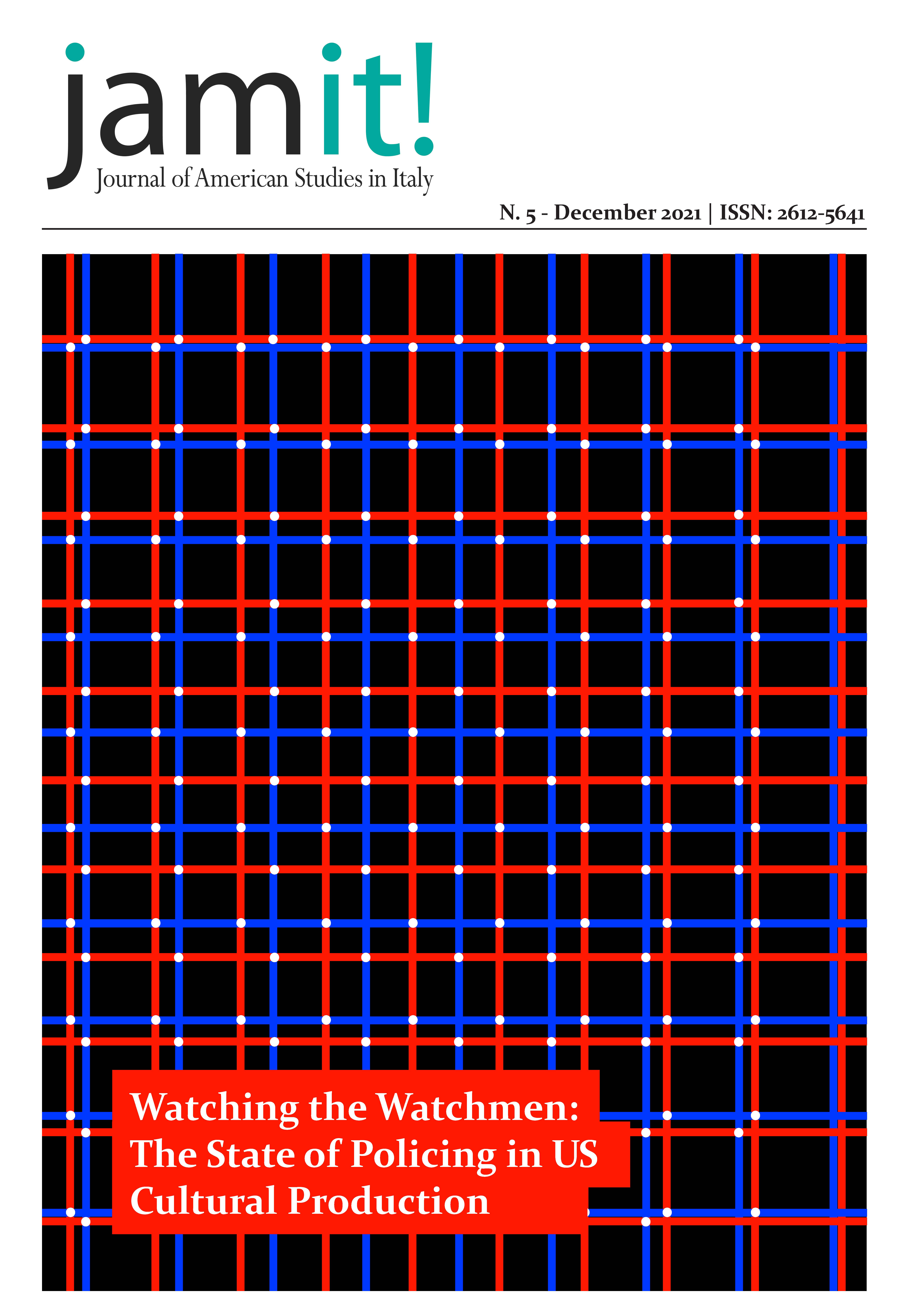 “Watching the Watchmen:” The State of Policing in US Cultural Production
No. 5 (2021)
“Watching the Watchmen:” The State of Policing in US Cultural Production
No. 5 (2021)US obsession with policing can be traced back as far as John Winthrop’s sermon “A Model of Christian Charity” (climaxed in the noted “the eyes of all people are on us”), delivered in 1630 on board of the Arbella. In one of white America’s foundational texts, the “eyes of all people” stand as an early figuration of panoptical undercurrents in the United States, whereby a professedly metaphysical yet very concrete control is enforced to safeguard social and ethical order. Canonical US literature, from Nathaniel Hawthorne’s The Scarlet Letter to Ralph Ellison’s Invisible Man also reminds us that order, even when not deferred to the State, has been violently enforced through coercion, stigma, or segregation throughout the history of the nation. Echoing the seminal figure of Esther Prynne, narratives produced by authors as diverse as W. E. B. Du Bois, Charlotte Perkins Gilman and, more recently, Sandra Cisneros, Louise Erdrich, and Ta-Nehisi Coates, are figurations and proofs of the United States’ leviathan policing apparatus and its employment in regulating non-conforming subjects in the name of a perfectly-engineered City Upon a Hill and the capitalistic permutation of its transcendental concept of social order.
The state systematically marshals the bodies of its citizens through practices such as biopower and necropolitics; in doing so, it also shapes and channels our understanding of race, gender, sexuality, and identity. This is especially evident in the US prison system, with its world-record constellation of institutions that actively re-design the institutional contours of national social inequality while also standing as a demonstration of how unfettered capitalism (even in its neoliberalist guise) predates on minoritarian and oppressed subjects for its reproduction. The recent wave of events across the United States and growing appeals to states of exception have further called attention to systematic police brutality and its role in stabilizing authority as part of the state apparatus. Across the nation, citizens are fighting back against what Herbert Marcuse has called “surplus-repression,” that is, “the restrictions necessitated by social domination,” (1955, 35) that characterize ideology and praxis of advanced industrial societies up to their contemporary neoliberal incarnations. If racialized violence that has been perpetrated since the Federalist Era through both institutional and private forms of racial policing reverberates in the murders of Breonna Taylor, George Floyd, and Ahmaud Arbery; the protesting, marching, and rioting that ensued – culminated in the Defund the Police movement and in the deployment of federal troops to contain protests and protestors – point to the desire of new forms of governance (and self-governance) from the opposite poles of the political spectrum: a counter-apparatus from below, aiming to citizens empowerment and liberation, on the one hand, and what we may call a “neo-conservative revolution,” aimed at preserving old white patriarchal structures.
The aim of this Special Issue of JAm It! (Journal of American Studies in Italy) is not only to discuss representations and histories of police and policing across multiple systems but also to analyze (and produce) counter-imaginaries, modes of care that aim at seeing, rather than watching, citizens and bodies. At this sensitive moment in American history, when national understandings of, as Michel Foucault would have it, “disciplin[ing] and punish[ing]” are being especially questioned, we look for contributions that, through the analysis of representations and/or cultural artifacts, frame policing in its fluid connections with the way in which US culture and counterculture have imagined and produced systems of control.
-
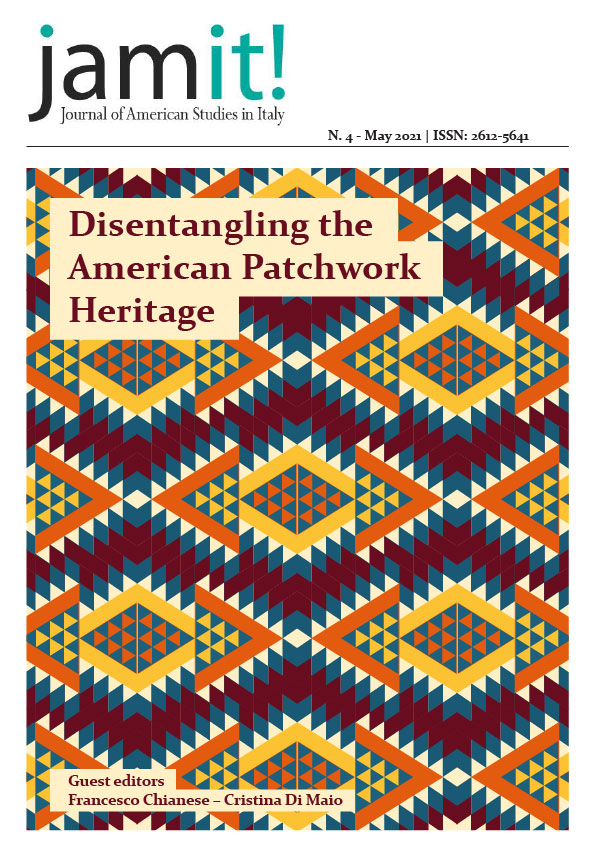 Disentangling the American Patchwork Heritage
No. 4 (2021)
Disentangling the American Patchwork Heritage
No. 4 (2021)Only about ten years ago, in his inaugural speech, Barack Obama expounded a reassuring and quasi-utopian view of the United States, by claiming the “patchwork heritage” of the United States to be a strength, as well as the very fabric of its society. He thus drew the fire of those who maintained that such a position would inexcusably downplay the racial contradictions and inequalities that had marked the country’s history. And yet, in the same years, alternative standpoints ardently promoted the multicultural model, defined as an effective realization of cultural pluralism, and hybrid and post-ethnic frameworks were boldly being endorsed. In fact, ever since the Nineties, alongside great efforts to voice the perspective of cultural minorities, the critical discourse in various academic fields has at times highlighted a certain skepticism towards studies privileging an ethnic analytical framework for investigating social dynamics, cultural and literary texts, or even an inclusive multicultural perspective where diverse ethnic viewpoint could co-exist.
Nonetheless, signifying the variety of cultures composing the United States has been a concern of American literature since its foundational stages, as the multicultural crew of the Pequod in Herman Melville’s Moby Dick testifies. In more recent times, there has been a proliferation of films and television series foregrounding and problematizing the connections among different communities, followed by a wide public acclaim; this element, alongside the international success of authors such as two-time Pulitzer Prize winner Colson Whitehead, Susan Abulhava, Rita Ciresi, Joshua Cohen, Myriam Gurba and Ocean Vuong, among many others, confirms that American culture, in a wider perspective, is now more than ever marked by the encounters and clashes of communities of which it is the result. These factors also underline that both the American and the international audience crave for stories that investigate the ways in which the multicultural framework of the United States constantly reshapes itself. While sociological and historical studies inform us about the spaces we inhabit through statistics and surveys, thus pursuing the thorough scientific investigation that this field requires, cultural narratives that resonate with our own experiences unveil the stories of the individuals hidden behind those statistics and surveys.
The fourth issue of JAm It! (Journal of American Studies in Italy) delves into new critical approaches to the complex and often-fraught multicultural paradigm, whose formulation and (re)conceptualization is far from being exhausted in a country which has never ceased to be a target destination for migrants.
-
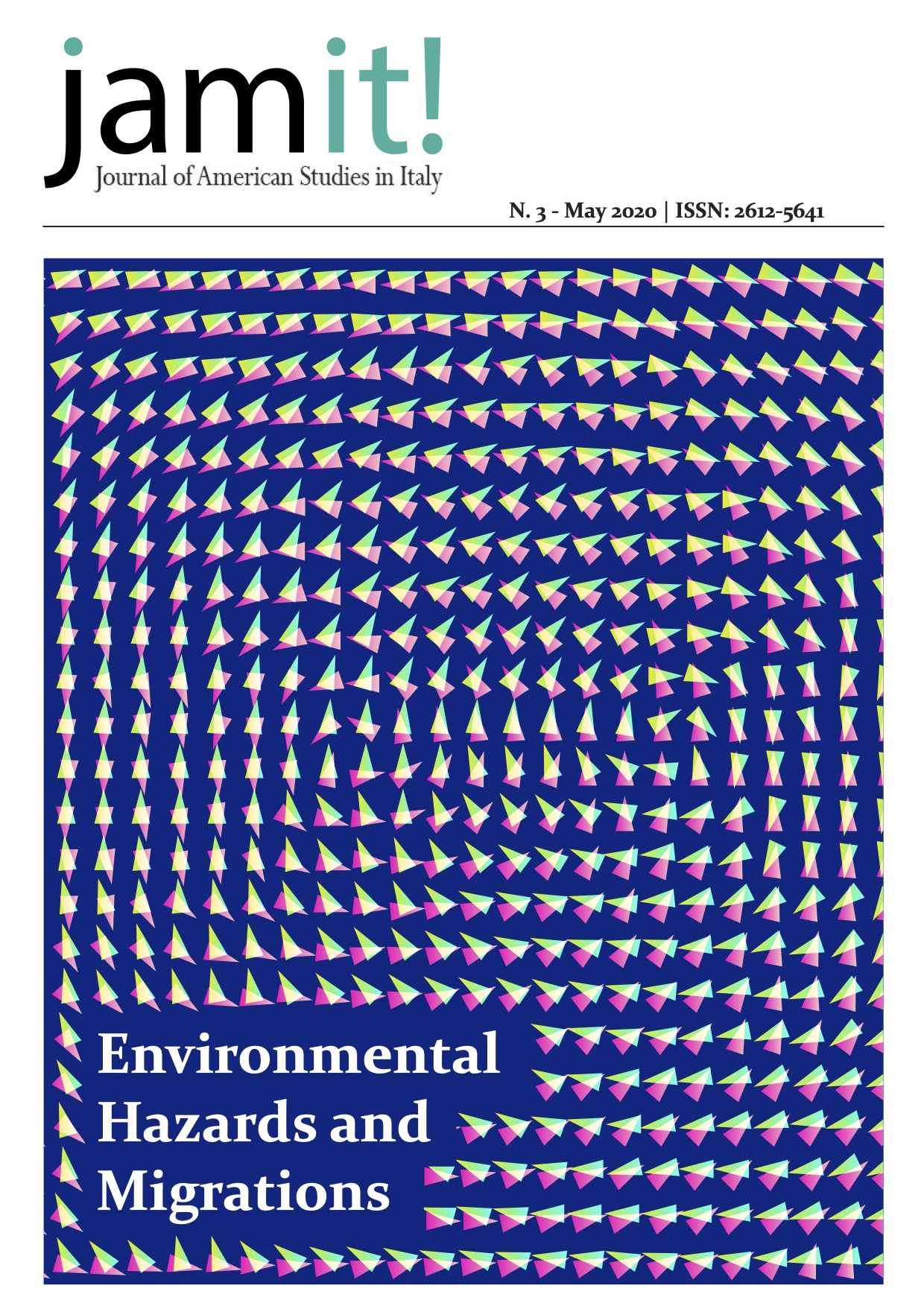 Environmental Hazards and Migrations
No. 3 (2020)
Environmental Hazards and Migrations
No. 3 (2020)The third issue of JAm It! explores the relations between environmental transformations and migrations in the North American context from a multi-disciplinary perspective. While scholarship in American Studies has produced relevant contributions analyzing the historical and present contingencies of both endogenous and exogenous migratory flows, the complex relations between migrations and ecological change require further inquiry.
Since the United Nations Environment Programme’s recognition of environmental refugees as an official category in 1985, scholars from several disciplines have begun to look at the meaningful interconnections among climatic disruptions, ecological transformations, and migratory phenomena. As an example, a discipline that has contributed to the global debate is the growing subfield of Environmental History of Migration (EHM). Equally important is the proliferation of geographical and geopolitical studies addressing the relationship between contemporary migratory issues and political upheavals as a reaction to pressing environmental issues, such as in the case of the Arab Spring, or Central American Farmers. Finally, both literary ecocriticism and ecolinguistics are also unveiling original research angles exploring popular narratives problematizing migrations in a changing eco-biosphere.
With this issue, JAm It! aims to bridge that research gap with contributions that discuss environmental migrations from/to/within the United States from different methodological lenses, unveiling and highlighting new approaches to this topic which continues to sparkle debate and controversy in contemporary US politics.
-
 Rethinking 1968 and the Global Sixties
No. 2 (2019)Special issue, Marta Gara and Virginia Pignagnoli eds.
Rethinking 1968 and the Global Sixties
No. 2 (2019)Special issue, Marta Gara and Virginia Pignagnoli eds. -
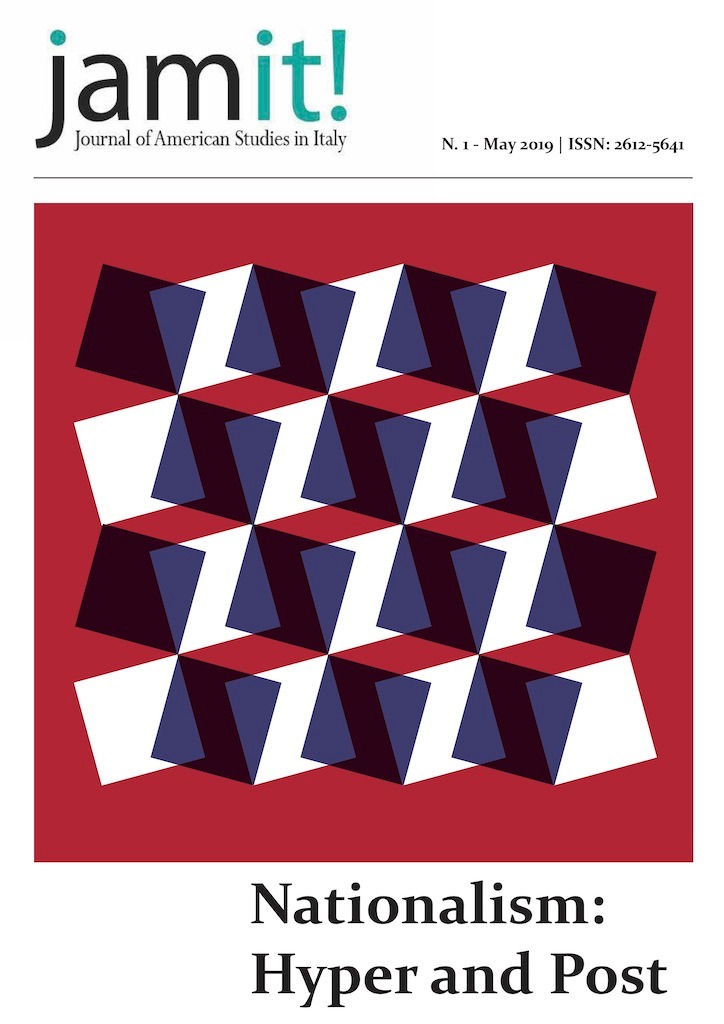 Nationalism: Hyper and Post
No. 1 (2019)
Nationalism: Hyper and Post
No. 1 (2019)The first issue of JAm It! tries to explore the intricacies of contemporary U.S. politics by addressing notions of hyper-nationalism and post-nationalism.
The last few years have seen a revitalization of hyper-nationalist movements, which are not only exaggerated forms of nationalism but also belie a growing yearning to safeguard established hierarchies based on race, ethnicity, and social status. Fueled by fears of terrorism, racial hostilities, and recent iterations of the vigilante syndrome, these movements rally the most intolerant parts of U.S. consciousness. On the other side of the political spectrum, many anti-nationalist and post-nationalist movements have sprouted out of a transnational outlook, disengaged from notions of national order and control. These reactionary radical sentiments are not only directed at the rising nationalist wave, but are also reared by discursive practices and global narratives that transcend a state’s domestic interests and extend to international struggles for socio-environmental and climate justice.
Despite the schismatic nature of contemporary U.S. society, spaces of protest, dialogue, and confrontation have proliferated far beyond geographic boundaries. Technological advances have rendered most of these boundaries obsolete and have thus championed new means to express dissent and connect with other dissenting voices across the world to create transnational sites where ideologies, claims, and conflicts are difficult to distinguish or gauge. Given these developments, nationalism and its afterlives become not only problematic but also call for further scrutiny.

